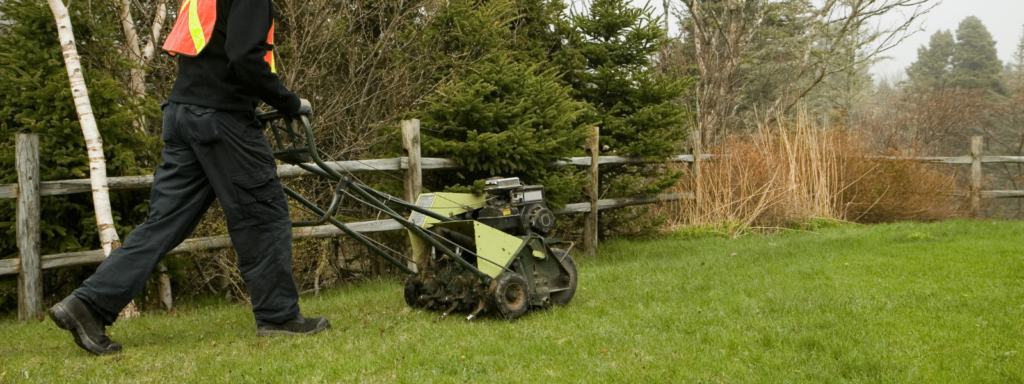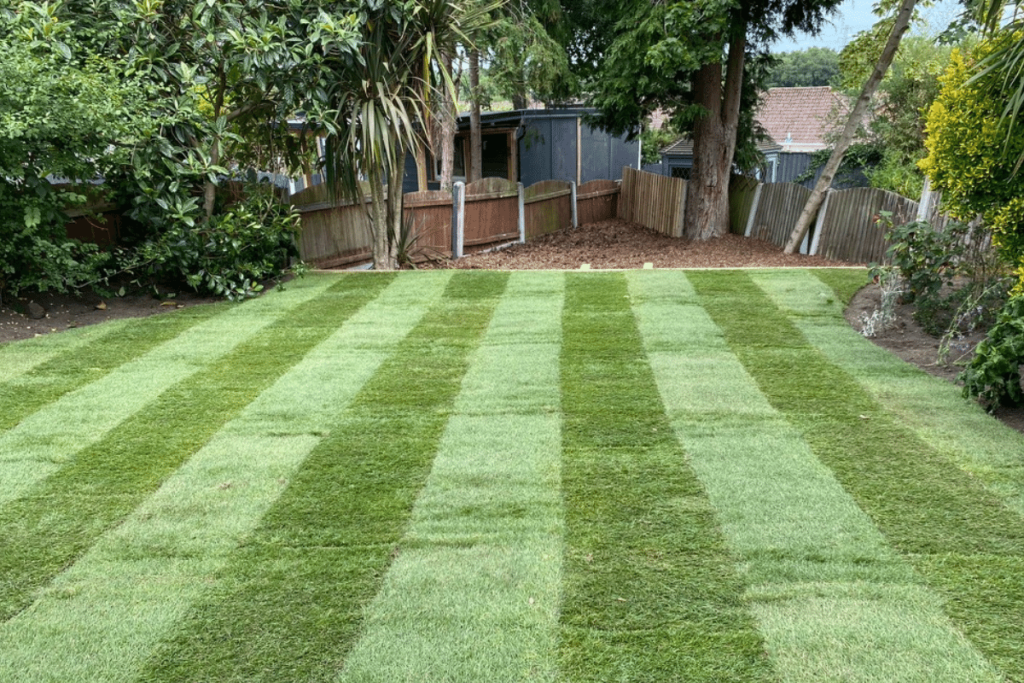Autumn Lawn Care

After a long summer of getting the best out of your lawn, it is time to start preparing it for the winter. There are a few simple steps that you can take to ensure that it stays looking green and healthy for those cosy autumn evenings – whilst also getting it ready to bounce back in the spring.
Autumn is the perfect time of year to start again with your lawn treatment programme as the soil temperature is still warm enough to stimulate grass growth. Here are some simple tips on how to maintain your lawn in autumn…
Scarify
Scarifying is when you rake your lawn to reduce the layers of thatch. Thatch is a collection of dead grass and old moss that can prevent water and fertiliser from getting through to the roots and soil. Autumn is a great time to scarify as you can rake a little deeper than if you were to do it in spring when you would have to be more delicate due to the young growth.
Trim back lawn and bed edges
During the summer your lawn edges may have got a little bit overgrown, which makes this the perfect time of year to trim back your garden edges. For edges in beds where the soil is neatly trimmed but the grass has grown over horizontally, use lawn edging shears to cut back the grass. Don’t forget to pick up the cuttings from the bed. For edges that are not straight use a plank of wood like a giant ruler with an edging iron and trim along for a perfect straight edge. Again, don’t forget to collect the trimmings.
Flatten and roll uneven areas
If you’ve had children and pets playing on the lawn during the summer, or perhaps it is just an area that has been neglected and become uneven, you should consider flattening it down to ensure you don’t have any flooding or dry spots when the winter rains set in. For areas that are particularly bumpy, you can use an edging iron (or a spade if you don’t have one) and shave the ground level. Once you have done this, aerate the soil underneath with a fork and re-lay turf level to the rest of the lawn. Dips/troughs in the garden should also follow this process until the whole lawn is level.
Aerate your lawn
Aeration is a vital part to having a good looking lawn. The process of aerating is essentially spiking the lawn to allow for more air (and nutrients including water) to get to the grass roots. Aeration will also help your lawn survive through more extreme conditions such as waterlogging or drought.
Fork compacted areas
Areas of the lawn that get heavy traffic in the summer will be very compacted and will need forking to break up the soil and improve the drainage when the rain starts to pour. Ensure that you push the fork four to six inches in to the ground to get the proper aeration and drainage.
Apply top dressing
Once the lawn is flat and aerated, it’s time to put some top dressing down. Top dressing improves soil structure and encourages strong root development so helps to support a healthy lawn. Spread the lawn dressing evenly over the grass with the back of a rake, working it well into the holes created by spiking.
Apply autumn lawn weed and feed product
Once your lawn is treated and in pristine condition, it’s important to get some lawn feed down to ensure that the roots are still growing strong throughout the winter. You should use a different lawn fertiliser in autumn that you would use when you are preparing your garden in spring. Fertiliser is best applied using a lawn spreader to ensure even application over your lawn – this will help prevent any scorching or damage. Autumn lawn fertiliser is high in potash and phosphates which will better protect the grass from frost and icy conditions. Spring and summer feeds that are high in nitrogen will encourage top growth, which is soft and easily damaged by frosts and not ideal for autumn lawn feeding.
